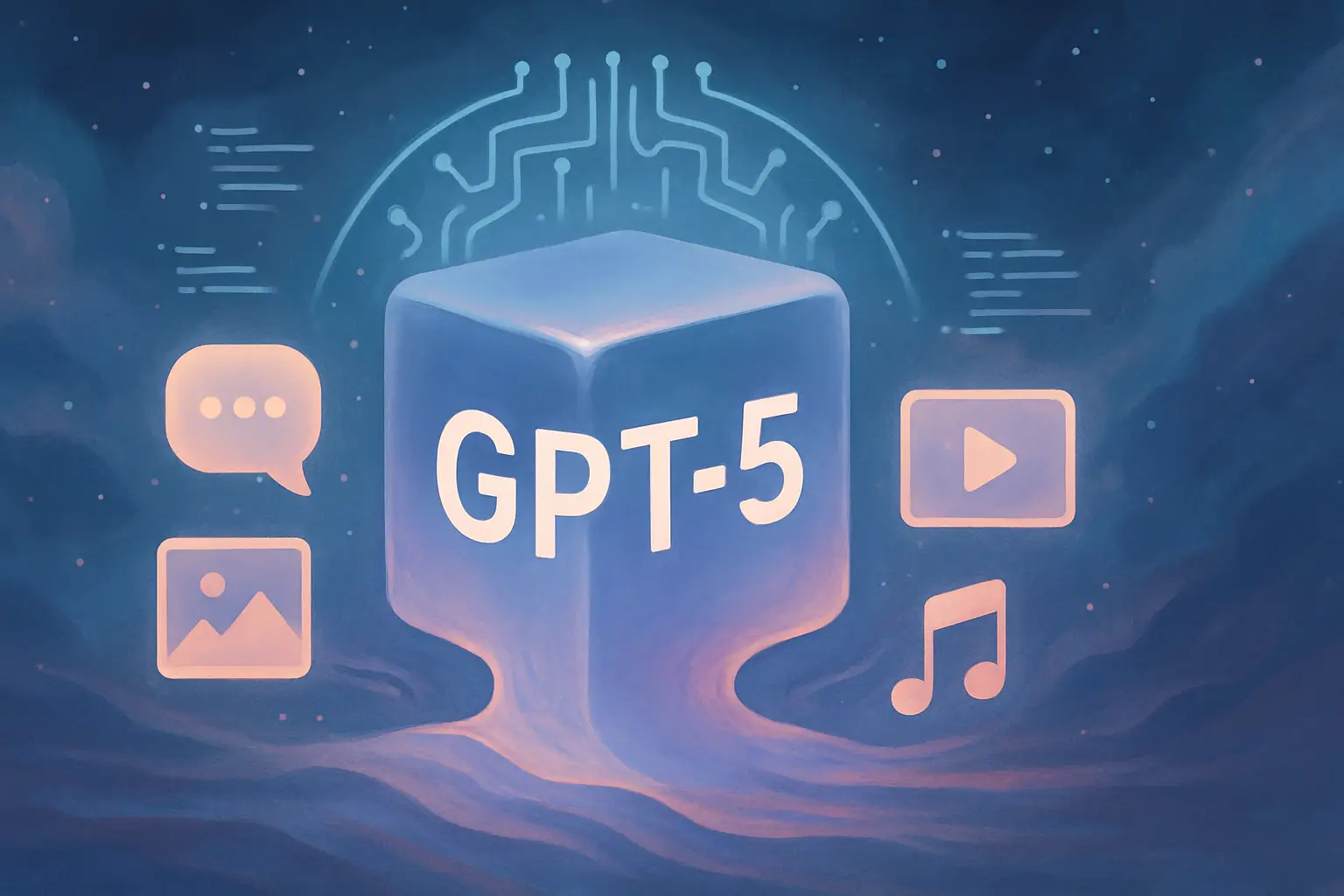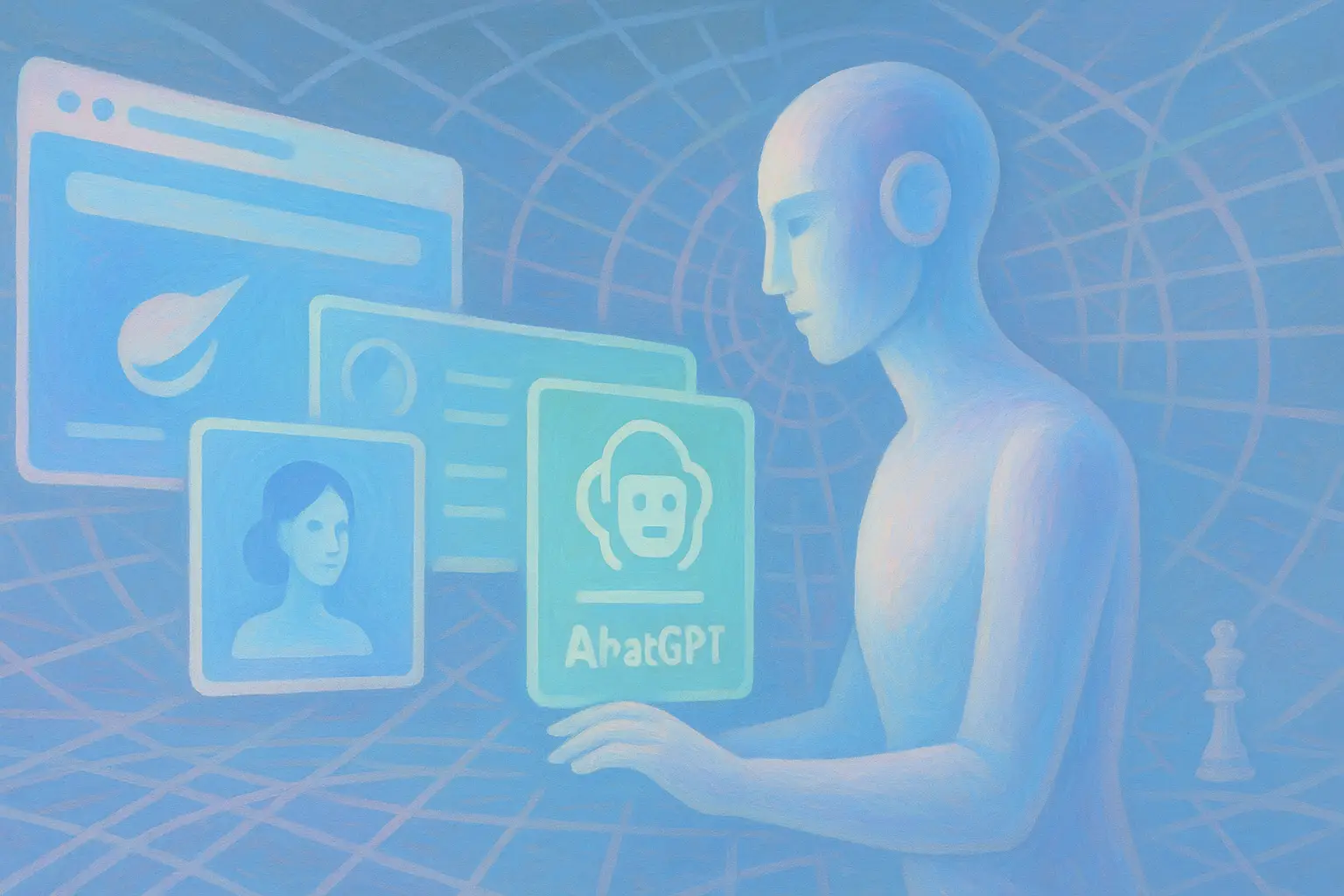
GPT 5 Release - All you need to know
Table of Contents
- Introduction
- The Revolutionary Unified Architecture of GPT-5
- Breakthroughs in Reasoning and Multimodality
- Performance Benchmarks and Expanded Capabilities
- Safety, Accuracy, and Ethical Considerations
- Industry Impact and Real-World Applications
- The Road Ahead: GPT-5 in the Evolving Landscape of AI
- Frequently Asked Questions (FAQs)
Introduction
On August 7, 2025, OpenAI set the stage for an impressive evolution in artificial intelligence with the launch of GPT-5. This model has been widely described as the smartest, fastest, and most useful language model to date, promising not only enhanced reasoning but also a seamless integration of multiple modalities into a single unified framework. Today, I am excited to share with you everything you need to know about GPT-5, exploring its innovative architecture, breakthrough capabilities, and the impact it may have across various industries.
GPT-5 isn't just another iteration of earlier models. It represents a leap forward in building a model that skillfully combines reasoning, multimodality, and dynamic task execution. Whether you are an avid follower of AI progress or a casual observer, the journey of GPT-5 from concept to execution provides fascinating insights into cutting-edge research and development. In the following sections, we will dive deep into the technical details, discuss its real-world applications, and explore why GPT-5 is generating so much buzz in both academic and commercial circles.
Generate Veo 3 JSON, Fast
Create structured, optimized JSON for Veo 3 in minutes. Clear fields. Correct syntax. Consistent results.
Open Veo 3 JSON GeneratorThe Revolutionary Unified Architecture of GPT-5
One of the standout features of GPT-5 is its unified architecture. Earlier language models often required a careful balancing act or even switching between different models to handle varying tasks. GPT-5 breaks that mold. It combines various aspects of cognitive reasoning, multimodal processing, and task execution within a single engine, thereby streamlining the performance and making it extremely flexible.
A Single Intelligent Engine
In previous systems, handling tasks that ranged from straightforward conversation to deep data analysis meant invoking separate modules—as if talking to two different machines. GPT-5, by contrast, achieves all of this with a single intelligent engine. It uses a real-time model router that dynamically assigns queries to the appropriate subsystems based on the nature of the task. Whether it needs to provide a quick answer, conduct complex calculations, or interpret photographs and audio simultaneously, GPT-5 intelligently routes tasks to its fast and deep reasoning chambers.
This real-time router is not merely a theoretical novelty. By evaluating task complexity, required tool use, and even conversation context, GPT-5 ensures responses are generated optimally. The model is available in several variants—Regular, Mini, and Nano. Each variant can adjust its reasoning depth from minimal to high, providing users with a customized balance between speed and cognitive depth.
Expanded Context and Output Capacity
Another impressive aspect of GPT-5 is its expanded context window. Previous models were limited in the number of tokens or words they could process in a single exchange. GPT-5, however, extends these boundaries significantly. The input limit has been expanded to 272,000 tokens, while the output limit reaches 128,000 tokens. This improvement is crucial for applications that require long-form content generation such as analyzing lengthy documents or maintaining conversation coherence over extended sessions.
This substantial increase means that GPT-5 can now handle complex, multi-step conversations or create comprehensive documents without losing track of context or details. Whether you’re drafting a detailed technical report or engaging in a prolonged brainstorming session, GPT-5’s improvements offer a far more robust user experience.
Breakthroughs in Reasoning and Multimodality
Advances in artificial intelligence are often measured by a system’s ability to solve complex problems and its capability to understand multiple types of inputs. GPT-5 is a remarkable step in this direction. Its breakthroughs are twofold: new strides in logical reasoning and groundbreaking improvements in multimodal understanding.
Structured, Stepwise Reasoning
GPT-5 sets a new standard for structured, step-by-step reasoning. Gone are the days when an AI’s answers were mere surface-level responses. With GPT-5, the AI can carry out multi-step logic and chain-of-thought reasoning with enhanced reliability and clarity.
The model’s design allows it to adjust its computational resources based on the complexity of the prompt. For instance, when confronted with advanced mathematical problems, GPT-5 effortlessly scales up its reasoning ability without compromising response time. This dynamic adjustment ensures that the AI can solve tasks ranging from simple queries to sophisticated problems that require deep logical chains and scenario-based planning.
One of the remarkable improvements of this model is its performance in higher reasoning benchmarks. Whether coding, solving puzzles, or analyzing intricate diagrams, GPT-5’s step-by-step reasoning mechanism enhances its overall reliability, offering responses that are well-grounded in logic and detail.
True Multimodal Understanding
GPT-5 builds on the multimodal strengths introduced in previous iterations, and it goes beyond by fully integrating text, images, and audio processing. In practical terms, this means GPT-5 can interpret a variety of input types fluently. For example, it can summarize charts, provide insightful analysis of photographs, and even transcribe audio with a level of finesse not seen in previous models.
The capability to understand both static images and real-time audio further cements GPT-5 as an invaluable tool for diverse applications. Imagine a scenario where you upload a sketch of a user interface design and ask the model for improvements; GPT-5 can offer suggestions based on both the visual layout and any accompanying text. This true multimodal approach elevates the chances of achieving highly detailed and relevant responses across a host of different tasks.
Some pioneering applications target support for native video understanding. Although video integration is still in its early stages, GPT-5 is designed to pave the way for future developments, such as integrating with platforms like OpenAI’s SORA text-to-video system. This opens up new possibilities in video content analysis and synthesis.
Performance Benchmarks and Expanded Capabilities
The real-world utility of GPT-5 is best understood by looking at its performance benchmarks across a variety of domains. The model has surpassed many of its predecessors in tasks that require intricate analysis, problem-solving, and creativity.
Performance Benchmarks Across Domains
GPT-5 has been tested on numerous academic and applied benchmarks, earning accolades for its high performance. Whether it’s solving advanced math problems, executing code reviews, or providing diagnoses in healthcare-related applications, GPT-5’s performance often sets a new standard.
For example, when faced with challenging mathematical datasets, GPT-5 has been reported to achieve scores nearing perfection. In coding tasks, the AI’s ability to generate, debug, and refactor code on demand makes it an invaluable tool for developers. Additionally, on language and logic benchmarks, such as those used for chain-of-thought reasoning, GPT-5 constantly demonstrates its improved performance by providing detailed, well-thought-out responses that maintain high levels of accuracy.
Expanded Capabilities in Professional Domains
GPT-5 is not just a tool for casual conversation or academic puzzles. Its expanded capabilities have significant implications for professional applications in various fields:
-
Software Engineering: Developers can now rely on GPT-5 to design entire applications, generate code from scratch, debug existing systems, and optimize algorithms. Its ability to understand context and deliver coherent, working solutions makes it a powerful ally in the software development lifecycle.
-
Content Creation and Writing: Writers, journalists, and content creators find in GPT-5 a highly skilled assistant capable of drafting full-length articles, reports, and research papers. Its ability to adjust column spacing, tone, and style makes it a reliable co-writer for diverse styles.
-
Data Analysis: In fields such as market research or financial analysis, GPT-5’s capacity to interpret and synthesize vast datasets means that analysts can derive insights more quickly and accurately. This efficiency is no small feat, given the increasingly data-driven nature of decision-making in many industries.
-
Healthcare: A notable improvement in factual accuracy and a marked reduction in hallucination rates have positioned GPT-5 as a useful tool in healthcare diagnostics and patient engagement. With improved safety protocols, its role in providing preliminary medical insights is both exciting and promising.
Configurability and Scalability
Understanding that no single configuration suits all tasks, OpenAI has designed GPT-5 to offer different versions suitable for varied use cases. The Regular model is equipped with the full suite of capabilities, making it ideal for users who require depth and precision in their interactions. Meanwhile, the Mini and Nano models are tailored for environments where speed and low latency are paramount. This scalability means that businesses of all sizes can find a model that fits their needs without compromising the quality of interaction.
By setting up different reasoning levels within each variant, users can control how GPT-5 approaches each question. Whether the need is for straightforward answers or for complex, multi-layered analyses, the model can be fine-tuned to balance between response time and computational depth.
Safety, Accuracy, and Ethical Considerations
As with any major advancement, GPT-5 comes with its share of responsibilities. OpenAI has placed a high priority on safety, aiming to ensure that the model is both accurate and ethically sound.
Accuracy and Hallucination Reduction
Previous AI models were sometimes known to produce misleading or factually incorrect outputs—a phenomenon commonly referred to as “hallucinations.” With GPT-5, significant strides have been taken to reduce such errors. OpenAI reports a notable reduction in factual inaccuracies, particularly in complex or open-ended queries. By refining the training data and incorporating advanced error-checking protocols, GPT-5 has made commendable progress toward reliable performance, particularly in critical areas such as healthcare, law, and technical documentation.
This focus on accuracy makes GPT-5 a far more trustworthy assistant, especially when used in contexts where precise information is paramount. The improvements also extend to ensuring that responses are detailed yet measured, striking a balance between creativity and factuality.
Advanced Safety Training: “Safe Completions”
A standout feature of GPT-5 is its commitment to “safe completions.” Instead of bluntly refusing to answer queries that might be potentially harmful, GPT-5 is designed to provide partial answers or outline high-level alternatives in a manner that remains helpful yet cautious. This strategy not only enhances user satisfaction but also mitigates risks of misuse or misunderstanding.
Whenever GPT-5 encounters a request that touches on sensitive topics, it explains its reasoning transparently. This feature, though technical in nature, resonates strongly with efforts to build more accountable AI systems—ones that can say “I’m not sure” or “This might need human review” rather than oversimplifying complex issues.
Ethical and Regulatory Dimensions
As the power of AI grows, so do the ethical and regulatory challenges associated with its deployment. GPT-5’s release has reignited discussions on transparency, bias, and the potential for misuse. OpenAI has been proactive in addressing these concerns by engaging with policymakers and external auditors to ensure that the model's operation aligns with best practices in ethical AI development.
For instance, measures have been introduced to guard against the propagation of harmful stereotypes and to ensure that the model is sensitive to different cultural and linguistic contexts. OpenAI continues to emphasize responsible research practices and works closely with community experts to refine and improve these measures over time.
It is important that users understand that, while GPT-5 is a powerful tool, it is not infallible. Ongoing efforts are required to refine its training, monitor its performance, and incorporate feedback to address any emerging issues. This openness to continual improvement is, in many ways, one of the model’s greatest strengths.
Industry Impact and Real-World Applications
GPT-5 isn’t confined to the realm of academic experiments or theoretical marvels—it is already making waves across several industries. Its blend of robust reasoning, multimodal understanding, and advanced safety protocols has enabled it to embed itself into various real-world applications.
Transforming Professional Environments
In the corporate world, GPT-5 is transforming how professionals approach information processing and decision-making. Its ability to synthesize voluminous data and provide nuanced insights has led to its adoption in fields where rapid, accurate analysis is critical.
-
Decision Support Systems: Numerous industries, ranging from finance to legal services, have integrated GPT-5 to help in synthesizing and interpreting complex data sets. This is instrumental in helping experts arrive at informed decisions even when faced with massive volumes of documentation.
-
Customer Service and Virtual Assistance: Chatbots powered by GPT-5 are far more adept at handling customer inquiries in a natural, conversational manner. With the capability to understand context and continuously track previous dialogues, these systems reduce the need for frequent human interventions. This, in turn, leads to more efficient service and higher client satisfaction.
-
Healthcare Support: Healthcare providers have found a valuable partner in GPT-5, which can assist in preliminary diagnostics and patient engagement. By working alongside medical professionals to process patient data and provide preliminary insights, GPT-5 aims to streamline the workflow in medical facilities, allowing human experts to focus on more complex cases.
Creative Industries and Content Generation
Writers, artists, and marketers are among the professionals reaping the benefits of GPT-5’s content creation capabilities. Whether it is generating engaging blogs, drafting technical documentation, or even brainstorming creative ideas, GPT-5 provides a structured yet flexible approach that adapts to different contexts.
-
Journalism and Report Writing: In an era of information overload, GPT-5 is helping journalists sort through data and extract meaningful narratives. Its ability to generate coherent and contextually accurate articles means that news outlets can quickly turn around quality content.
-
Multilingual Support: GPT-5’s enhanced language capabilities extend well beyond the major world languages. This broad linguistic proficiency ensures that users from varied geographic backgrounds, including regions like Noida in India, can benefit from a truly global AI assistant.
The Impact on Software Development
Software development is one arena where GPT-5's influence is particularly profound. The model’s improved capabilities in coding, debugging, and code review are already making significant waves:
-
Automated Code Generation: Developers can now rely on GPT-5 to generate entire code segments based on high-level instructions. This means that the generation of boilerplate code, or even complete modules, has become more efficient and error-free.
-
Dynamic Debugging: GPT-5 is equipped to help identify bugs, suggest fixes, and even optimize algorithms in real time. The result is a seamless development process that reduces the time-to-market for software applications and improves the overall quality of the code.
-
Project Management Integration: With capabilities that extend to autonomous task execution, GPT-5 provides support for managing complex projects. This includes everything from data collection to report generation, creating a more cohesive and productive work environment for development teams.
The Road Ahead: GPT-5 in the Evolving Landscape of AI
GPT-5’s launch is not the end of a story but rather a significant chapter in the ongoing evolution of artificial intelligence. While some may wonder if this model might be a stepping stone towards Artificial General Intelligence (AGI), it is clear that much progress has been made in bridging the gap between human-like reasoning and machine precision.
A Stepping Stone to Greater AI
GPT-5 integrates technical improvements that are expected to influence subsequent advancements in AI. Its unified architecture, improved safety protocols, and dynamic reasoning abilities lay down a strong foundation for more ambitious projects in the future. Researchers and industry experts alike agree that GPT-5 represents an important milestone—a platform from which more advanced, integrated, and context-aware systems can evolve.
Continuous Learning and Adaptation
One of the core philosophies behind GPT-5 is that learning is an ongoing process. Unlike earlier iterations that might have required significant retraining to adapt to shifting contexts, GPT-5’s design inherently accommodates continual improvement. This means that as user interactions grow and change, the model is better equipped to evolve its responses, gradually becoming even more proficient in understanding complex, dynamic queries.
The developers are also working on improving API access and lowering barriers for entry, ensuring that both research initiatives and enterprise solutions can harness the full power of GPT-5. These advancements are critical in making sure that the best of AI is accessible to organizations of all sizes and across all industries.
Broader Implications for Society
Beyond the technical breakthroughs, GPT-5’s release has broader societal implications. At a time when AI is becoming omnipresent in daily life, keeping a close eye on ethical considerations and ensuring accountability becomes paramount. GPT-5’s design reflects a clear focus on not just advancing technology, but doing so in a way that respects community standards and regulatory norms.
As AI continues to impact various sectors—from education to finance—the emphasis on safety, factual correctness, and ethical alignment will shape the future of information interaction. Both developers and users are learning that as AI becomes deeper integrated into our lives, trust and responsibility must guide every step of the innovation process.
Innovations on the Horizon
Innovation in AI is a ceaseless journey. With GPT-5 setting new benchmarks for performance and flexibility, it also invites new challenges and opportunities. For instance, its integration with platforms like Microsoft 365 Copilot and Azure AI hints at a lively future where AI assistants are not just tools, but active partners in workflow management and creative processes.
The potential to integrate with text-to-video systems, improved video understanding, and further expansion into multimodal inputs suggests that we have only begun to scratch the surface of what unified AI can offer. As research continues and feedback from a global user base is incorporated, the next iterations are sure to push the envelope even further.
In wrapping up this detailed exploration of GPT-5, it is clear that this new model provides tremendous opportunities for both technology enthusiasts and industries alike. With its unified architecture, enhanced reasoning, and commitment to safety, GPT-5 continues to push the boundaries of what AI can achieve. Whether you’re coding a new application, drafting an in-depth analysis, or ensuring quality patient engagement in healthcare, GPT-5 is poised to become an invaluable tool.
Its impressive performance benchmarks and broad-ranging capabilities set a new standard for language models. Moreover, the ethical considerations integrated within its design reassure users that responsible AI development is at the forefront of its evolution. As we move forward in this exciting AI landscape, GPT-5 is not just a technological innovation—it represents a paradigm shift in how we interact with intelligent systems.
The journey of GPT-5 from its launch to becoming a pivotal part of various real-world applications is inspiring. It reminds us that technology continues to evolve in ways we can barely imagine a few years ago. For developers, researchers, and everyday users, GPT-5 is a testament to the endless possibilities that arise when talent, technology, and ethical practices converge.
As we watch the continued rollout and further integration of GPT-5 into diverse platforms, one thing is certain: the future of AI is here, and it is brighter than ever. The model’s blend of creative capability, analytical depth, and dynamic adaptability not only heralds a new era of intelligent systems but also sets the stage for a future where human-AI collaboration reaches new heights.
Keep an eye on upcoming updates and integrations, as many more exciting developments are anticipated in the months to come. Whether you’re just curious about the technical details or planning to adopt GPT-5 for your own projects, this new release is a reminder that the path forward in AI is one of continuous learning, steady improvements, and worldwide impact.
Feel free to explore more about GPT-5 through official documentation linked on OpenAI’s website and trusted technology news outlets. Embrace this revolution—GPT-5 is here to change the way we think about and interact with artificial intelligence.
Frequently Asked Questions
Share this article
Related Articles

ChatGPT Go Free in India: Unlock AI Power 2025!
Explore how OpenAI's ChatGPT Go free offer in India is set to transform AI accessibility, from enhanced features to market impact and strategic benefits.

Atlas vs Comet: AI Browser Battle 2025
Dive deep into the world of AI-native browsers with ChatGPT Atlas and Perplexity Comet. Explore their unique features, philosophies, and the battle that is reshaping how we interact with the web.

ChatGPT Atlas: AI Browser Revolution
Explore how ChatGPT Atlas, OpenAI's groundbreaking AI-powered browser, transforms web browsing with contextual intelligence, personalized automation, and robust privacy controls.
